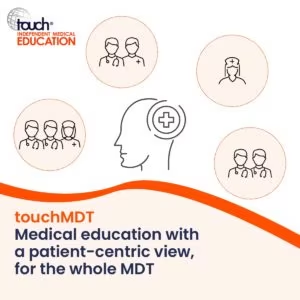Mapping patient pathways with a focus on patient-centricity: the role of medical education
By David Noble
‘Patients should always be at the heart of everything we do in medical education and mapping patient pathways is one of the most important elements of patient-centricity’
When I said to a clinical colleague: ‘We must make sure that medical education is patient-centric’, she looked at me quizzically and asked: ‘Hasn’t it always been that way?’ She has a point. Patients should always be at the heart of everything we do in medical education. Mapping patient pathways is one of the most important elements of patient-centricity. Patient-centricity, while implied, has been underserved in medical education. Recently we put our minds to resolving this and developed an online educational format focusing on real-life interactions between healthcare professionals (HCPs) and their patients in a multidisciplinary team (MDT) setting.
Diabetes: as a case study for patient-centricity
For patients with diabetes, many HCPs are involved in planning patient management, with the patient at the heart of any decisions. You only need look at the National Institute for Health and Care Excellence (NICE) pathways in adult Type 2 Diabetes (T2D) to see how many specialists are involved, including the diabetologist, dietitian, podiatrist, ophthalmologist, urologist and specialist nurse. Dr Sarah Ali, Consultant Diabetologist at Royal Free Hospital, London said: “The MDT is integral to diabetes management. With the person living with diabetes at the centre of this team, the other MD team members bring together their varied skills and expertise to enhance diabetes care at every step, as well as focusing on the changing needs of that person throughout their health journey.” Neely Mozawala, Diabetes Specialist Podiatrist, said: “MDTs are crucial for the care of diabetic patients as diabetes is a complex disease affecting many structures of the body, therefore different specialities need to be involved to provide holistic interventions for the patients. MDTs also provide quick, high-quality and patient-centred care which is dependent on strong communications between specialities – which is vital. I worked at King’s College Hospital, one of the largest diabetic foot MDTs in Europe; MDTs were crucial for me to do my job as the more time taken to make a decision, the higher the likelihood of a patient having an amputation increases. MDTs allowed us to make quick decisions to salvage limbs and save lives.”

Patient-centricity in medical education
While T2D is a good example, every disease that requires management involves an MDT to some degree, and many guidelines map the patient pathway. The education of HCPs has become more sophisticated over the last five to ten years and the pandemic has advanced that further. As educators, we try to help HCPs understand the key considerations in an MDT by focusing discussions between disciplines – including the patients themselves. At Touch, we developed an educational format solely focused on the interactions of an MDT. We took our lead from an experienced educational strategist (Helen Such, formerly of Cardiff & Vale College), with input and review from our accrediting partner University of South Florida, Health (USF), with feedback from our expert editorial boards. Currently, we are developing MDT education in oncology, heart failure, diabetes, HIV and asthma. The response from our learners has been astonishing, with much higher levels of engagement. Why is this? Learner feedback makes it clear that this is due to the education being focused on real-world clinical practice and patient experience. This observation is further corroborated by Susan C Frye from USF, who said: “By placing the patient at the centre of the educational activity, the healthcare team is trained on how to provide care that is truly about the patient, with the patient and for the patient rather than treating from just a clinical perspective. The MDT educational format guides the learner to partner with the patient and coordinate a treatment approach that is collaborative, delivers high-quality care and has the same common goal of improving the patient’s outcomes.”
Measuring the effectiveness of MDT-led patient education
A key requirement of any medical education activity is reporting the educational outcomes. While we align to the industry gold standard of Moore’s levels, we have adapted the metrics to be more sophisticated to better reflect the level of learning, and more importantly any change in clinical practice, by discipline. This is helping us understand where learning needs around patient management are poorly provided so that we can address them in future educational activities.
The future of patient-led education
Online medical education has not been highly patient focused. We are in an age where patients expect more individualised care plans. HCPs expect that education providers should tailor their approach to better mirror real-world clinical practice and diseases management. My own mantra to people wishing to become an educator is that if the patient is not your first thought, then you are in the wrong job!
David Noble is Chief Operating Officer at Touch




